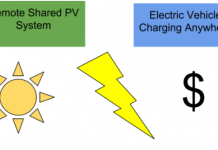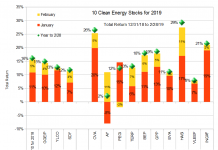by the Climate Bonds Team
Hyundai Capital Services issues first Korean corporate green bond for hybrids and electric vehicles (5yrs, 2.87%, $500m)
Hyundai Capital Services, the subsidiary of Hyundai Motor Company (005380.KS) that provides loans and leases for new Hyundai and Kia cars, issued a $500m green bond. The inaugural green deal has a 5-year tenor and fixed semi-annual coupon of 2.87%. Lead underwriters for the deal were Bank of America Merrill Lynch, Citi, and Credit Agricole.
The green issue is the first corporate Korean green bond and only the third out of Korea after KEXIM’s initial green bonds in 2013 and 2016. It’s also number 3 on the list of green bonds issued for green vehicles following Toyota’s two green ABS for hybrid and EV assets in the past couple years.
Similar to Toyota (TM), Hyundai does not have a second review of its green bond. Independent reviews of a bond’s green credentials provide investors with an important insight to the bond’s adherence with best practice guidelines. Next time round, it would be great to see Hyundai adopt a market leader position and obtain a review.
Proceeds from the Hyundai green bond will finance a range of Hyundai and Kia hybrids (HEV) (including the Sonata HEV, Grandeur HEV, Ioniq HEV, K5 HEV, K7 HEV, Sonata PHEV) and electric vehicles (EVs) (including the Soul EV, Ray EV and Tucson ix Fuel Cell).
So, how do we determine what vehicles are green?
Late last year we finalised the Climate Bonds Standard for Low Carbon Transport, which includes eligibility criteria for low emission passenger vehicles. Our Technical Working Group (TWG) and public consultation process both concluded that private vehicles should meet emissions threshold (based on data from the IEA mobility model and Global fuel economy initiative).
For cars to be considered green under the Climate Bonds Standard, they must meet, or be below, a maximum emissions level of 85-90 grams of CO2 per passenger kilometre travelled (g CO2 p/km).
The Hyundai and Kia Hybrids in this green bond are all under a 110 g CO2/pkm maximum emissions – so not far off the standard threshold. This is compared to the top performing petrol and diesel cars, which struggle to get below 110 g CO2/pkm in emissions.
This threshold decreases over time as part of a trajectory to achieve a 2-degree world by 2050. As we get closer to the mid-point of the century we need vehicle technology to be improving to achieve lower and lower emissions. It’s about pushing fuel efficiency across all modes of transport.
These thresholds apply to hybrid vehicles that use both fossil fuels and electric technology for motive power but it’s much easier to classify all electric or fuel cell vehicles. These types of vehicles are considered green under the Climate Bonds Standard.
We sometimes hear arguments along the lines of ‘but what if the electric vehicles are using electricity from a brown grid – is that still green?’ – well, yes! Here’s why: we can’t hang around for 20-30 years until we’ve transitioned all electricity grids to green energy sources before developing and adopting low emission vehicles technologies.
If we wait until 2050, we will be too late.
We need to use the time now to get our technology up to scratch so that we develop highly efficient vehicles by 2050. So, all electric vehicles are in; full stop.
Back to this deal – it’s fantastic to see another green bond from a car manufacturer. It is financing technology crucial for a transition to a 2-degree future.
Welcome to green bonds Hyundai!
The Climate Bonds Team includes Sean Kidney, Tess Olsen-Rong, Beate Sonerud, and Justine Leigh-Bell.
The Climate Bonds Initiative is an “investor-focused” not-for-profit promoting long-term debt models to fund a rapid, global transition to a low-carbon economy.








